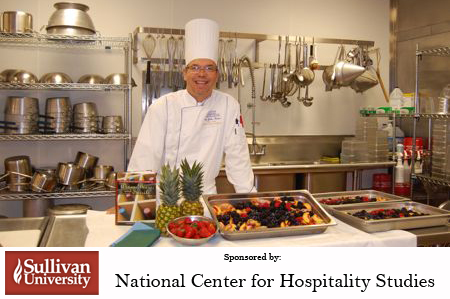It was 52 degrees when I got up this morning. Suddenly a cup of coffee is a necessity rather than a convenience. Cereal takes a back seat to oatmeal or eggs, and my thoughts turn to cream, butter and let’s face it; fat.
While fat continues to plague our diets and clog our arteries it does have some benefits to us. When taken in moderate amounts and with attention to the types and quality of the fat used it does aid in brain growth, provides insulation within the body and creates a general sense of comfort which few ingredients can supply.
The very idea of “comfort food” would be hollow without the use of fat somewhere in the dish, i.e. Mac and cheese made with fat free milk and cheese.
Fat comes to us in many different forms and by its very nature can shift from solid to liquid with a change in temperature. Some fats are actually designed to stay solid when they should be liquid. This allows for better storage or a more controlled break down under the cooking or baking process. Anything we might have done to that fat may have compromised it, but convenience becomes the paramount asset of that particular fat.
The choice of animal or plant fats is usually a choice of health or an attention to a certain recipe. Saturated fats, primarily from animals, are the types of fat that should be restricted, but are often the ones we indulge in the most. Unsaturated fats can carry their own issues as the method of processing these fats can sometimes make them just as difficult to control.
The essential kernel of information in all this information is that fats are essential to our wellbeing and are advantageous in moderate doses.
This said, when I turn to the uses of fat in cooking I find that moderation is a matter of balancing the appealing aspects of each fat with the meal you’re cooking. Give me a full fat mac and cheese in a moderate portion over low fat alternatives every time.
That mac and cheese paired with roasted vegetables or a salad will satisfy the visceral need for fat, the nutritional paring has some balance and I end up feeling full and more importantly satisfied.
The choice of cooking fat in a busy restaurant is most usually butter based. Clarified butter occurs when we slowly heat the solid butter to extract cooking fat minus the butter solids. The absence of butter solids allows us to raise the “smoke point” of the cooking fat to a higher temperature.
Sauté is a high heat cooking technique that bears most of the load in a busy kitchen. The high smoke point lets us get the pan hot enough to quickly brown food and finish dishes. Some unsaturated fats do the same thing but most have to be processed to that point.
Olive oil, a go-to oil for most health conscious eaters, is not a high heat fat unless it’s blended with another more stable oil, giving you the flavor and some of the health benefits of olive oil with the cooking properties of canola.
All this can be very confusing and can force us to make decisions about our fat intake without actually choosing. By deferring, you lose the opportunity to make a choice to enjoy your food guilt-free. Something as simple as eating a steak can be magnified into a bad life choice. You need to understand that a steak a day is the questionable choice, whereas a nice grilled steak, using the natural fat of a local grass raised cow on a hot grill to provide moisture, flavor and tenderness as it melts is a great choice.
Try a chimichurri based in olive oil and fresh herbs to sauce the steak and the meal is not only relatively healthy but memorable and lasting as well.
Food has always been a balancing act on many levels. Local or national? Organic, sustainable or commercial? People may ask you to make choices, but the elements that make up our food and ultimately our diet should be as personal as the other life choices we make.
Fat is a building block and a warm blanket, a villain and a comfort with a capital “C”. Lots of things would not work without a bit of it in our lives. Look for ways to moderate and not eliminate one of our primary building blocks and one that finishes our dishes in a deeply satisfying and sometimes emotional way.
Herb chimichurri (for chicken, pork, beef and fish)
This is a great go to sauce not only for the proteins mentioned above but for grilled vegetables, roasted greens, and even as a salad dressing.
1 bunch fresh Italian flat leaf parsley washed
1 bunch fresh mint washed
½ bunch of fresh tarragon washed
3 fresh garlic cloves
1 tsp. red chili flakes
Olive oil to smooth out flavors
Lemon and lime to bring acidity
Salt to tasteBunches may vary from 2-6 oz. depending on where you get them. The recipe is based on a 3 oz. bunch but you can vary the amount of garlic if it’s too strong. The entire list of ingredients minus the olive oil is chopped roughly and placed into a strong blender (Vitamix works great!)
With the blender running slowly pour the olive oil in until you get a smooth consistency. Adding the lemon and lime at this point can help with the blending. If the herbs are still a bit wet from washing this will also help with making the puree smooth. If you wish a coarser texture pulse the blender until the ingredients are combines and then coat the ingredients with olive oil. This will prevent the herbs from browning further but will produce a darker chimichurri.
John Foster is an executive chef who heads the culinary program at Sullivan University’s Lexington campus. A New York native, Foster has been active in the Lexington culinary scene and a promoter of local and seasonal foods for more than 20 years. The French Culinary Institute-trained chef has been the executive chef of his former restaurant, Harvest, and now his Chevy Chase eatery, The Sage Rabbit, in Lexington.
To read more from Chef John Foster, including his recipes, click here.























